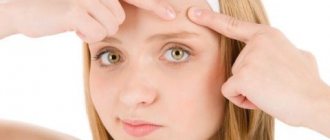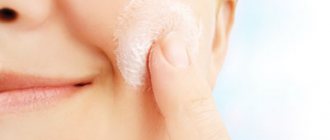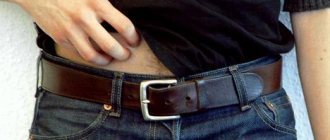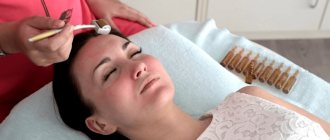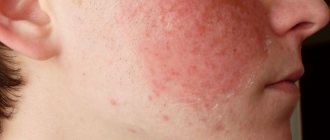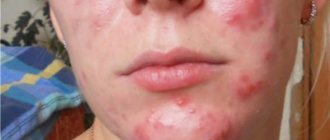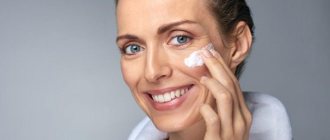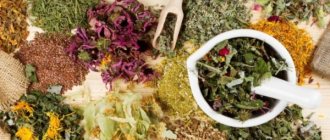Acne is a fairly common problem that occurs at any age. Some people manage to get rid of the rash right away, while others turn to the doctor with the question: why does the pimple not go away for a long time? After all, each person is individual, and there are many reasons for the appearance of acne. Therefore, to get rid of them you need to use a set of measures, the most important of which is to eliminate the cause of the rash. After all, most often a pimple does not go away for a long time because it is not treated correctly. It is best to use complex products that affect the skin in several directions, for example, “Crystaline”. This cream based on natural ingredients not only destroys infection and cleanses pores, it relieves inflammation and accelerates cell regeneration processes. Crystaline spot cream for acne will help get rid of acne breakouts quickly and for a long time.
Causes and risk factors
Skin rashes can occur regardless of a person's gender or age. Poor nutrition, excessive consumption of fast food combined with bad habits can lead to acne.
Acne is a chronic disease. After treatment, remission may occur, but it is almost impossible to completely get rid of it.
- The most likely cause of acne development is hormonal imbalance. It occurs as a result of exposure to triggering risk factors. These include:
- stressful situations;
- poor nutrition;
- bad habits;
- failure to comply with hygiene rules and regulations.
Both the digestive system and the skin suffer from these factors. Even with the most sophisticated diet, rashes may appear, because... Each person's body is individual. In some cases, following a diet can reduce the amount of acne, but it will not completely eliminate it.
- There are two types of hormonal disorders in men:
- true - in which the level of androgens is sharply increased;
- false – in which receptor sensitivity increases. The receptors receive false signals about an increase in the level of male sex hormones, as a result the work of the sweat glands increases.
In women, hormonal imbalances are associated with the fact that on average she gives birth 1-2 times, although nature provides for about 5-10 times. Because of this, the synthesis of some hormones may increase and persist for a long time.
Salon treatments
Salon cleansing is good, but some types have side effects, such as redness. If the technique is used correctly, the redness will go away quickly, but the effectiveness depends on the type of procedure.
In general, the salon removes excess sebum and saturates the skin with vitamins, which improves complexion. “Rough” types of cleansing injure facial tissues. Such methods are no longer relevant. Choose one of the modern salon treatment options.
- Vaporization is a procedure in which the skin is treated, steamed, cleared of acne and gets rid of inflammatory foci. During the vaporization process, moisture is eliminated: the face becomes dehydrated for some time. The main purpose of vaporization is to steam the face, open the pores and remove all defects.
Acne in childhood
The appearance of acne on the body of a newborn may be associated with non-compliance with personal hygiene rules, or with poor nutrition of the mother. Most often, such acne develops when the mother eats foods with a high degree of allergenicity (chocolate, strawberries, etc.). Treatment consists of correcting the mother's diet. Acne can appear on the face and throughout the body in the presence of infectious and inflammatory skin diseases - measles, rubella, etc. Treatment of such acne involves prescribing antibacterial therapy by an infectious disease specialist.
Why don't acne on my face go away?
You can only hope for regression of acne if you are under the age of 18, and only with stage 1 acne. If acne is not teenage and there are more than 10 inflammatory elements on the face, they cannot go away without specific treatment.
It is necessary to take into account that it is advisable to take cosmetic products only for the care of problem skin, not for the treatment of acne.
Cleansing foams with calendula, tonics with zinc, and aloe creams are excellent for maintenance therapy. But only drugs with azelaic acid, tretinoin or benzoyl peroxide provide a pronounced and stable effect.
If it is not possible to visit a competent dermatologist who will prescribe the correct drug, you can contact a cosmetologist. Acid peels, laser cleansing, yellow peeling with retinol provide a positive therapeutic effect.
Acne in adolescence
The growth of a child's body does not proceed at the same level. There are 2 periods of accelerated growth at 6-7 years in boys and 7-9 in girls. During this period, no changes related to hormones occur. But at 13-14 years old in boys and 10-13 years old in girls, the secretory activity of hormones increases in leaps and bounds. During adolescence, hormone levels increase sharply in both boys and girls. Acne develops. The skin tends to become oily, and the hair either becomes dull or dull. Pores can expand and accumulate a large amount of secretions, leading to the formation of pustules. If acne appears in adolescence, but does not disappear over time, this means that a true or false hormonal imbalance has occurred.
How to determine maturation?
There are a number of signs that help you understand that a pimple is ripe and therefore ready for further treatment. As an example - to extrusion. After all, if you squeeze out or otherwise remove an immature rash, then scars and scars may appear in the future.
You need to pay attention to the full formation of the white head. This suggests that the fat and pus have reached the surface layer of the skin, the exit. You also need to pay attention to whether the redness and inflammation have gone away. If not, then you can’t touch the pimple yet; you can only touch a ripe pimple. In this case, we will use means for accelerated maturation.
Acne in adulthood
Already in adulthood, neoplasms can be the causes of acne and hormonal imbalance. Impaired functionality of the adrenal cortex, pathologies of the ovarian-menstrual cycle (in women), prostate adenoma (in men) can cause the development of skin rashes.
In women over 30 years old, acne may appear before the onset of “critical days”. The use of combined oral contraceptives may also cause the development of skin rashes in various parts of the body. This is due to long-term use of drugs, or abrupt cessation of their use.
The use of low-quality cosmetics or cosmetics that have expired can also lead to defects on the skin. Nowadays, cheap cosmetics from China, the composition of which is practically unknown, are gaining popularity. It’s better to save up a little and buy cosmetics with natural ingredients from trusted companies that definitely won’t cause harm to the skin.
Frost and persistent cold temperatures can provoke acne.
In women over 50 years of age, the development of skin rashes is associated with menopause. The disappearance of menstruation and changes in hormonal balance provoke the development of acne.
In order to identify the real cause of acne, you need to seek help from a dermatologist.
Why is it dangerous?
We are taught to crush acne in adolescence by our mothers, and in rare cases, by fathers. After fruitless attempts to escape from the suffocating maternal grip, we resign ourselves, endure the pain and learn, thinking that we will not cause ourselves such pain.
Having become involved in the process, we regularly squeeze them ourselves; doctors, on the contrary, consider squeezing out pimples a dangerous undertaking for the following reasons:
- Mechanical damage to the walls of dilated blood vessels.
- Injury to the sebaceous gland.
- Scars, scars, depressions and spots, the consequences of squeezing out pimples.
- A wound open to infection.
- Infection through hands.
- When you smear the contents of an eel on your face, you can get furunculosis.
- When pressure is applied, the contents of the pimple come out both out and in. Pus, entering the bloodstream, spreads throughout the body, causing inflammation and even the formation of blood clots. The vessels on the face are closest to the brain; purulent contents with blood enter directly into the brain, causing inflammation of the meninges and sepsis.
There is an opinion among doctors that the pustule itself is located in a protective barrier created by the body, so it is better to leave its destruction to specialists.
Treatment of skin rashes
Untimely and inadequate treatment can lead to loss of time and serious harm to health.
- If rashes appear, it is prohibited to:
- squeeze out the formed pustules , even if they are “ripe”. After squeezing out, all the accumulated pus will not be completely removed, thereby expanding the source of inflammation. Damage to healthy skin is associated with rupture of the capsule under pressure. The pathogen located under the damaged capsule spreads through the bloodstream and lingers in other organs and tissues;
- leave everything to chance . Failure to provide treatment will result in acne that will not go away, and the affected areas of the skin will resemble a “pimple patch.” Failure to take antibacterial therapy in a timely manner can lead to the appearance of fungal diseases, one of which is thrush;
- try untested treatment methods taken from Internet resources . It is important to remember that each person’s body is individual. Not all people are suitable for one or another treatment method. Only after consulting a specialist can you try certain tips;
- using a hard sponge and hot water . These procedures increase sweat separation.
You should not delay contacting a dermatologist. If you still cannot visit it or there is no opportunity, it is recommended to use inexpensive products sold in pharmacies.
Medicines that improve the condition of the skin
For washing, it is best to use tar soap . After several uses, the condition of the skin will improve significantly.
Brewer's yeast tablets help restore impaired metabolism .
For topical use, it is best to use a 30% dimexide . The skin in the area of problem areas should be wiped daily 2-3 times a day using a moistened cotton pad.
Salicylic acid solution is also very effective in combating skin rashes.
It is also necessary to avoid stressful situations, special shocks and experiences that can develop at any age. Try to spend more time outdoors, meditate and lead a healthy lifestyle.
Using antibacterial, anti-inflammatory, antifungal agents can help eliminate acne.
What to do with a ripe pimple?
To remove a mature pimple, you can go to a beauty salon or carry out the squeezing procedure yourself. To do this you need to do the following:
- Wash your hands and face using soap.
- Treat fingers and inflamed skin with any antiseptic or alcohol.
- If the pimple is small and dry, lightly press on it from the side. This will be enough for the purulent formation to come out.
- If the pimple has viscous contents, after pressing on the side it may come out partially. As a result, there is a high probability of re-inflammation, which will provoke a new pimple. To avoid this, you need to take a needle, disinfect it, pierce a hole and squeeze out the pus through it.
- Treat the squeezed pimple with an antiseptic until the wound goes away. Lotions made from a decoction of chamomile and celandine, made at night, will have an excellent effect.
Source
Prevention
Preventive measures include weight loss, nutritional correction, eliminating bad habits and neuro-emotional shocks. The use of topical medications is recommended, as well as preventive visits to a dermatovenerologist and endocrinologist. Women over 40 years old need to visit a gynecologist for preventive purposes at least once every 2-3 months.
Tags:hormones, acne in children, acne in women, acne in men
Folk remedies
There are even simpler remedies, but they are no less effective at treating pimple maturation. These include, but are not limited to:
Although regular salt will also be appropriate, it is better to give preference to sea salt. It needs to be diluted with water until it turns into a paste. After this, you need to apply it to the pimples, leaving it for some time. Thanks to its properties, salt perfectly draws out pus.
Take raw potatoes and finely grate them. A cool paste comes out and is applied to the inflamed area for a couple of hours. The easiest way is to wrap it with a bandage. It comes off after a couple of hours. Repeats several times.
Types of acne
There are various methods to make a pimple ripen faster. But for an effective effect, first of all, you should determine the type of rash.
Comedones
A non-inflammatory type of acne that occurs when pores are clogged with sebum and dead epithelial cells. Open comedones look like black or brown dots, closed comedones look like small white bumps. If the pores become clogged from the outside, the subcutaneous sebum changes color when it comes into contact with air, becoming brownish or dark yellow with a black dot in the center. Small white pimples form when the bottom of a skin pore becomes clogged. Most often the rash occurs on the forehead, chin, and cheeks.
Internal acne
Subcutaneous pimples look like reddish bumps on the face; they take a very long time to mature and cause significant discomfort with their severe pain and unaesthetic appearance. When squeezed, inflammation can spread to other tissues.
Papules
If pathogenic microorganisms penetrate the comedones, red, inflamed pimples are formed that resemble balls or dense nodules. Accompanied by slight swelling of the skin and accumulation of purulent contents. Deep papules become painful to the touch and acquire a rich red or bluish tint.
Pustules
Quite large inflamed pimples with suppuration, the color of the contents varies from white to yellow or green, depending on the nature of the infection. Independent attempts to squeeze out such acne are fraught with serious complications, including sepsis.
Papules and pustules can merge, forming large inflamed lesions on the face. If acne is not isolated and appears constantly, you should definitely consult a dermatologist. You can try to cope with single pimples at home, using various means to speed up their maturation.
